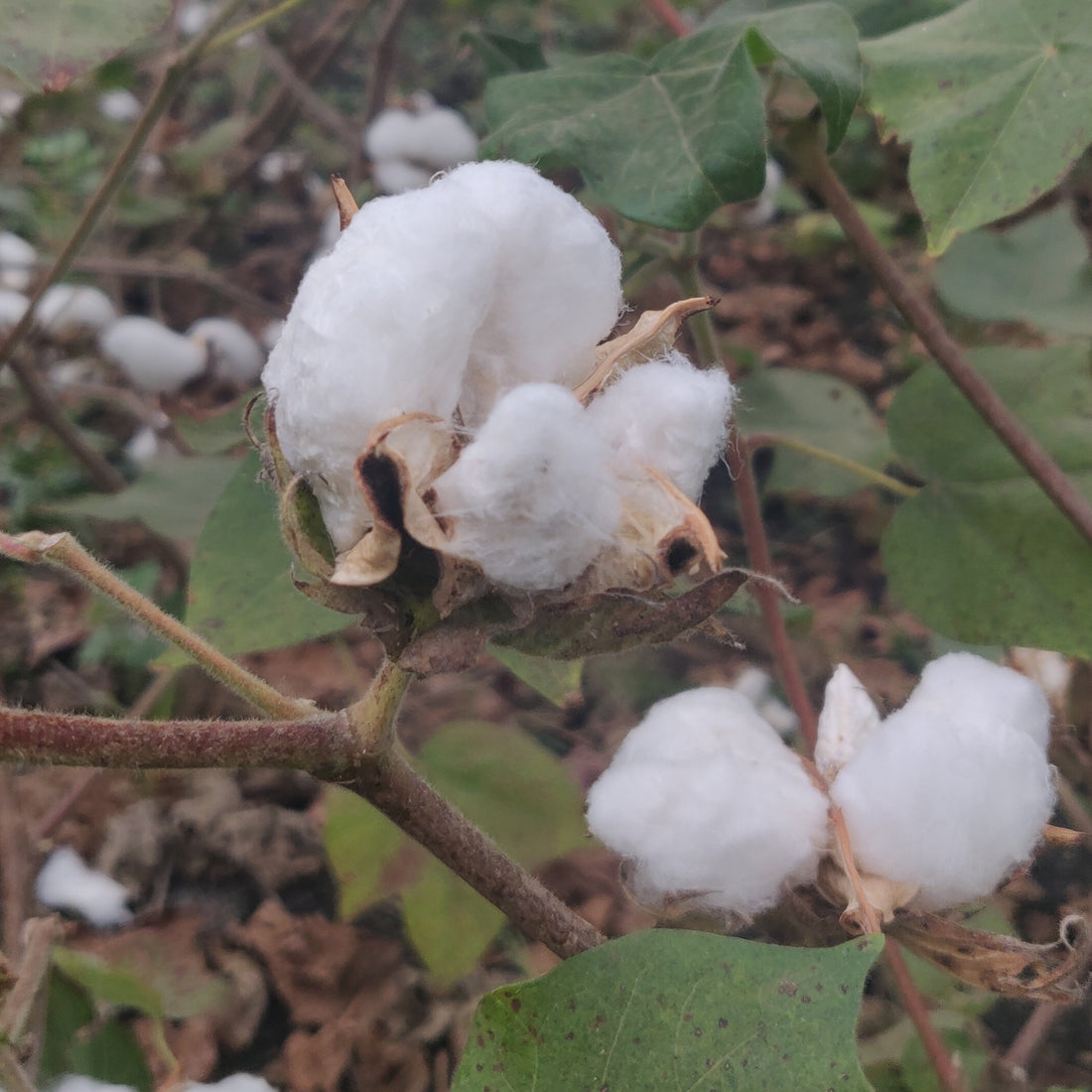Kala cotton is organic cotton that is originally cultivated in the Kutch region of Gujarat in India. It is an old-world cotton, and is grown without using methods such as modern genetic engineering and hybridization, which are used to produce almost 90% of cotton. But what makes this cotton extraordinary?
Water efficient
Kala cotton is amongst the most water efficient cottons in the world. It grows easily in rain-fed conditions-- even in areas which are considered drought-prone. Its drought tolerance is so high that it does not require additional watering (i.e. irrigation) to complete its life cycle.
Almost carbon neutral
Incautious use of inputs, such as water and chemicals in cotton production, is the cause for some of the key environmental issues associated with cotton production. Since Kala cotton is rain-fed and organic, it is cultivated without irrigation, chemical fertilizers and pesticides. Irrigation requires electric or diesel energy to lift and supply water. Manufacturing and transporting chemical fertilizers and pesticides require energy, resulting in greenhouse gases. Use of pesticides poisons theenvironment, soil, and water. Which is why the ecological footprint of Kala cotton is very low as compared to other cottons.
Social impacts
Another type of cotton—which accounts for 90% of cotton grown in India-- is Bt cotton. It is a genetically-modified hybrid that produces over 200 different Bt toxins, each harmful to different insects. Cultivating the Bt cotton variety may be economical in irrigated areas. But most cotton cultivation in India is rain-fed(69%). Multiple sources state that, although cultivating the Bt cotton variety may be economic in irrigated areas, the costs of Bt seed and insecticide increasethe risk of farmer bankruptcy in low-yield rain-fed settings. Farmer suicides are an unfortunate result of small farmers’ inability to absorb high-stake failures. Growing Kala cotton requires very low inputs and almost-zero risk. It also keeps farmers and their families safe. They are not exposed to toxic chemicals in the field or through their food and water supply.

